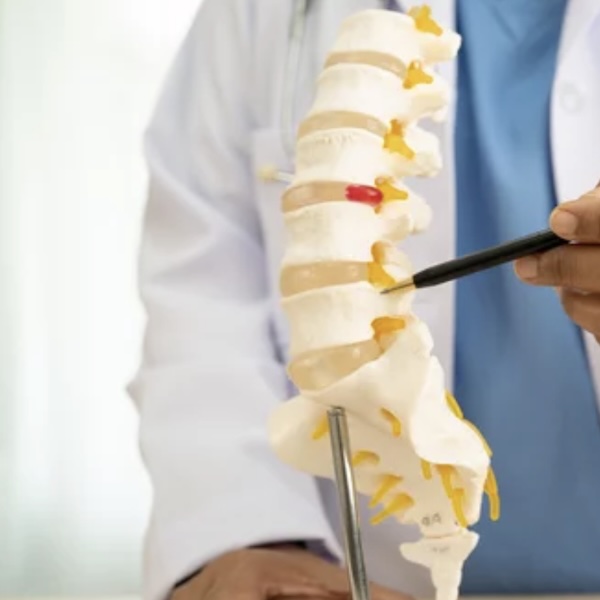
What is Lumbar Spondylosis?
Lumbar spondylosis is a degenerative condition that affects the lower spine, particularly the lumbar vertebrae and intervertebral discs. It is primarily caused by age-related wear and tear, leading to the breakdown of spinal discs, reduced flexibility and formation of bone spurs. While often part of the natural aging process, it can cause discomfort, stiffness or even nerve compression in some cases.
What causes Lumbar Spondylosis?
Lumbar spondylosis develops due to gradual changes in the spine over time, including:
- Disc dehydration and shrinkage
- Loss of spinal cartilage
- Thickening of ligaments
- Formation of osteophytes (bone spurs)
Contributing factors may include poor posture, lack of physical activity, heavy lifting, previous injuries or a sedentary lifestyle. Genetics and occupational strain also play a significant role in early onset.
What are the common symptoms of Lumbar Spondylosis?
The severity of symptoms can vary. Some people experience no discomfort, while others may develop:
- Lower back pain or stiffness, especially after waking up or prolonged sitting
- Radiating pain to the hips, buttocks, or legs (sciatica)
- Numbness or tingling in the legs or feet
- Reduced flexibility in the lower back
- Weakness in the legs of nerve roots are compressed
How Is Lumbar Spondylosis diagnosed?
Diagnosis of Lumbar Spondylosis usually involves:
- Physical examination to assess posture, flexibility and nerve function
- Imaging tests such as X-rays, MRI or CT scans to detect disc degeneration, bone spurs or narrowing of the spinal canal
- A thorough assessment helps rule out other conditions like herniated discs, spinal stenosis or inflammatory arthritis.
What are the treatment options for Lumbar Spondylosis?
Conservative treatment is often the first line of care and includes:
- Pain management through medications or muscle relaxants
- Physiotherapy to improve flexibility, posture and core strength
- Hot and cold therapy to reduce inflammation
- Lifestyle changes, such as weight loss and ergonomic adjustments
In advanced cases with nerve compression or severe pain, surgical options like decompression or spinal fusion may be considered.
Can lifestyle changes help manage Lumbar Spondylosis?
Absolutely. Lifestyle modifications are essential for both preventing progression and managing symptoms. Key practices include:
- Regular low-impact exercise like walking, swimming or yoga
- Maintaining a healthy weight to reduce spinal stress
- Avoiding prolonged sitting or heavy lifting
- Practicing good posture, especially while working or using electronic devices
- Strengthening the core muscles to support the lower back
Is there an effective Ayurvedic treatment for Lumbar Spondylosis?
Yes, Ayurveda offers a natural and holistic approach to treating lumbar spondylosis by addressing both the root causes and symptoms through balancing the Vata dosha, which governs movement and the nervous system.
Common Ayurvedic Treatments for Lumbar Spondylosis:
- Kati Basti: A localized oil therapy where warm medicated oil is pooled on the lower back to relieve stiffness and nourish spinal tissues.
- Abhyanga (Oil Massage): Full-body massage using herbal oils to improve blood circulation, reduce pain and relax muscles.
- Pizhichil: A therapy combining oil and heat, enhancing lubrication of joints and easing inflammation.
- Basti (Medicated Enema): One of the most effective treatments for Vata disorders, helps in detoxification and relieving chronic back pain.
- Herbal Remedies: Use of herbs like Rasna, Guggulu, Ashwagandha and Shallaki to reduce inflammation, strengthen bones and rejuvenate tissues.
- Diet and Lifestyle Guidance: Emphasis on warm, nourishing foods and avoiding exposure to cold or dry environments.